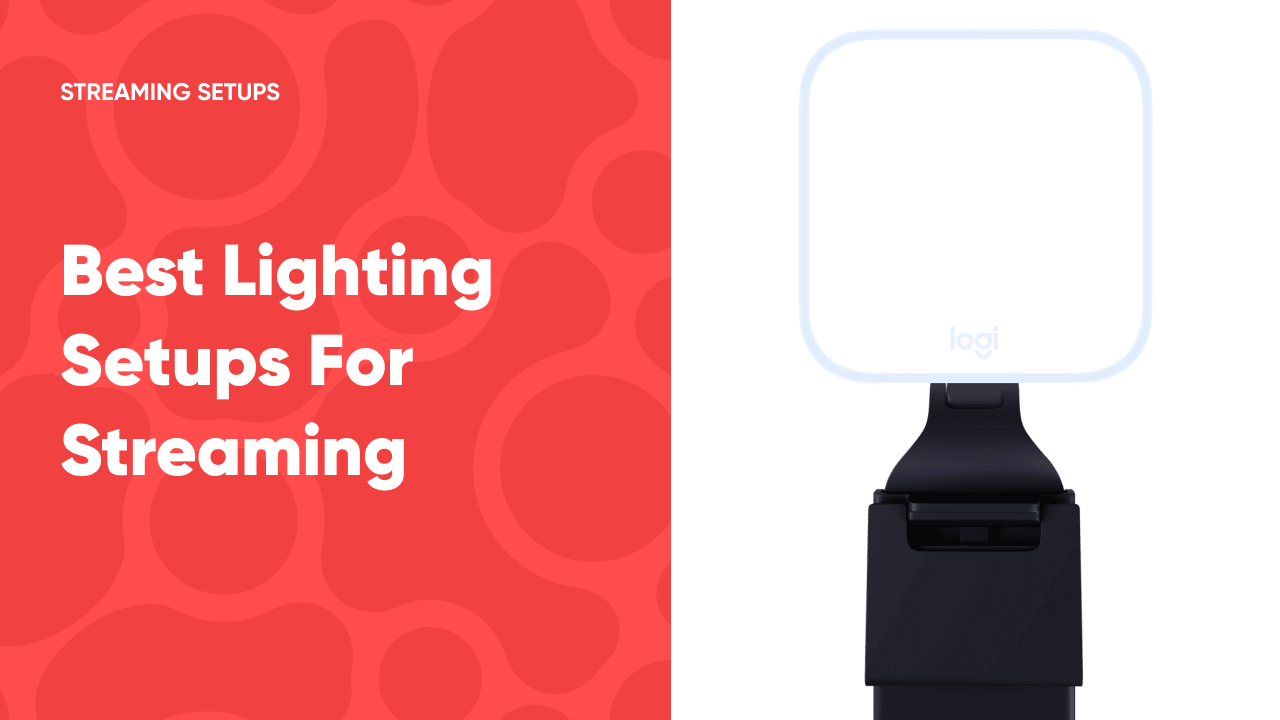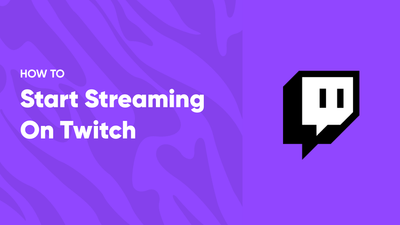
First of All: Can You Use Just Natural Lighting?
You may think that the natural sunlight that comes through your window should be enough. Although you can stream that way, we believe it's not that good of an idea. Natural light is distributed unevenly across space (and there can be obstacles such as trees or anything else), and it's impossible to control it. Want the weather to manage your streaming schedule? Natural light is the way to go! But seriously, even if you live in a sunny place - get some backup lights!
Stream Lighting Basics

Choosing lights for video production isn't as difficult as it may appear at first. Let's start with the basics:
What is a Key Light
The key light is the primary light of your setup. It's usually the brightest, most powerful light source employed to illuminate you in the shot. Typically, streamers use LED panels, softboxes, or ring lights as a key light. Depending on the type, it can create soft or hard light. Hard light is more focused and produces stronger shadows. In contrast, soft light "wraps" objects around, projecting diffused shadows with smooth edges.
What is a Fill Light
Fill light is a lower-powered light used to "fill in" the shadows created by the key light. Using only a key light will result in some dark patches. The fill light is used exactly for such situations. It's used to balance things out and make them look nicer. Streamers use softboxes and LED panels as a secondary fill light. Later in the article, we will discuss how the fill light might be positioned relative to the key light depending on the lighting scheme.
What is a Background Light
Although a backlight isn't necessary - a well-placed one will vastly improve the quality of your stream. It shines from back on your subject, removing any shadows leftover from your primary and secondary lights. The backlight should be equal to or less intense than the fill light.
Streamers use interactive light panels, floodlights, light strips, or projectors to make the background look cool. The greatest backdrop lights provide the following features: lighting manipulation, versatility, programmable modes, software or app management, various settings, power sources, and color temperature options.
Lighting Сolor Temperature

The concept of color temperature is straightforward. The Kelvin scale ranges from 1000 to 10,000, with the lower end being closer to red and the upper end being closer to blue. Streamers tend to stick between 3200 and 5600 for the key light, with 3200 being closer to a warm or amber white and 5600 being closer to daylight. When you have advanced lights that you can manually adjust, you can change the lighting scheme and the vibe of the stream at any time.
Streaming Lighting Options + Our Best Picks
There is no perfect lighting kit that suits everyone. To begin, create a vision for your stream's appearance. Should it be bold and vivid, or something cozy and homey? Consider this and proceed with the following information keeping your ideas in mind.
LED Panels/Desktop lights
A light panel is an excellent light source for streaming. Also known as an LED panel, it comprises many LED lamps spread across a broad surface. A light panel emits soothing light, is simple to install, and comes in large and small sizes. One disadvantage is that extra accessories can be challenging to find, limiting LED panel functionality.
Best LED lights:
-
Logitech Litra Glow
-
Elgato Key Light
-
Lume Cube Video Conference Lighting Kit
Best low-cost LED lights:
-
Neewer 5600K USB LED Lights
-
Emart 60 LEDs
Softboxes for Streamers
A softbox is a box that produces soft light. These are typically square or rectangular in design and range in size from medium to enormously big. They can be set at practically any place as long as there is enough room. Softboxes are one of the most effective lighting modifiers for softening light and reducing harsh shadows. Softboxes may provide beautiful results if you have the space to put them up.
Most softboxes and lamps are offered separately, but some manufacturers have premade kits. They include everything you need to set up a good softbox light in one package. The following are some of the greatest softbox lighting kits available.
Best Softbox Kits:
-
Interfit F5 Two-Head Fluorescent Lighting Kit
-
Fovitec 3-Point Classic Fluorescent Lighting Kit
Best Budget-Friendly Softbox Kits:
-
Neewer Softbox Lighting Kit
-
Inkeltech Softbox Lighting Kit
Ring Lights
A ring light is basically a light-emitting ring with free space in the middle for the phone or camera. It is a popular and budget-friendly way for streamers to significantly improve their lighting quality. It's easy to store, set up, and maintain.
Best Ring Lights:
-
NEEWER 20-inch LED Ring Light
-
LED ELGATO Ring Light
Best Cheap Ring Lights:
-
QIAYA Selfie Ring Light
-
ESDDI 18-inch Ring Light
Didn't find what you were looking for? Check this detailed streaming lights guide with handy information about each reviewed piece of gear.
Lighting Schemes

Lighting schemes refer to how the light sources are positioned in relation to the main subject in the frame. For example, you can create a more professional look for your stream by paying attention to the lighting scheme and your overall room setup. This article will instruct you on how to set up your streaming room. All in all, there are three common lighting schemes to choose from:
Three-Point Lighting Setup
Three-point lighting is a classic method of illuminating a scene with light sources coming from three angles. It is basically a key light paired with a fill and backlights. They are all facing the subject and are equally distant from one another. Many streamers use this setup to precisely concentrate the light beams on themselves in front of the camera.
Loop Lighting or Two Lights Setup
Another professional lighting design scheme that incorporates one key light and one fill light is called loop lighting. The key light is set at your eye level closer to the camera, while the fill light is placed on the other side to dispel the key light's shadows.
One Point Lighting Setup
A ring light or LED panel would be placed directly behind the camera shooting the stream in this setup. The one light scheme has the lowest cost and setup time, making it perfect for newbies and budget users.
Adjust Your Settings
So, you've set up your lighting and your camera. It's time to fine-tune your streaming software parameters for the finest possible quality. Based on your webcam, you can adjust settings either on the cam's control tool or directly on the streaming software. Anything with the word "auto" in it should be turned off. Auto-exposure, auto-gain, auto-white balance and similar features will not give you the best image. Instead, edit these settings manually to make your appearance look precisely how you want it.
Check this step-by-step video guide to make your stream camera look pro:
Final Thoughts
In the end, it's your content that matters the most. If you can't afford more expensive lighting and software, stick to the basics and use a few desk lamps. But always remember that light is an important component of your professional appearance. Whether you use the phone's lamp or a Softbox lighting kit makes no difference. What important is that you put up your best effort to make it attractive. Kudos!
Looking to get some more general tips? Recently we've contributed some tips for our friends at Porch who made a big article on how setup a money-making influencer space at home.




